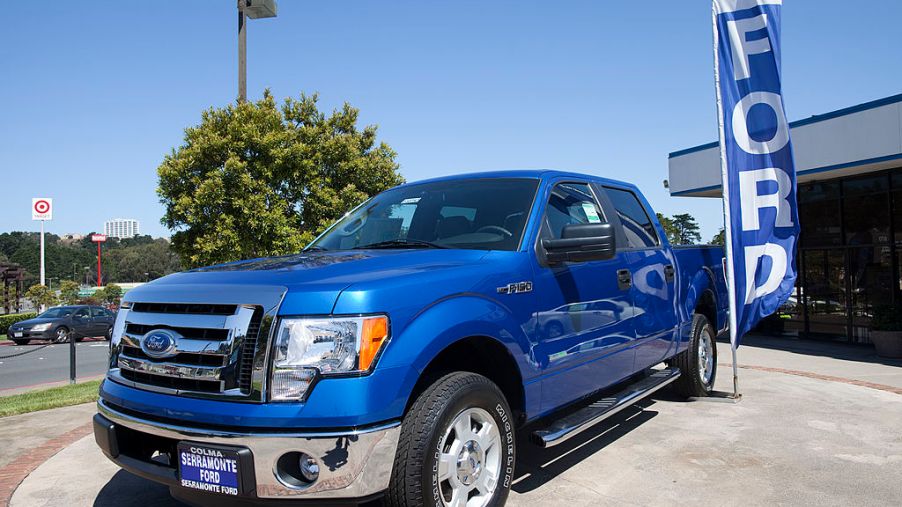
How the 2011 Ford F-150 Changed the Truck Industry
When Ford introduced its EcoBoost engine in 2011, it was met with much skepticism. While it has logged eight years on the road, some are still reserved about this relatively new tech. Despite this, for the past five years, the F-150 has been rated Pickup Best Buy by Kelley Blue Book, and Car and Driver named it the second-quickest production pickup. On the flip side, some of the biggest complaints related to the F-150 have been linked to its EcoBoost engine. How did the 2011 Ford F-150 change the truck industry and how has the introduction of the EcoBoost engine been a significant change for Ford trucks?
What is the EcoBoost engine?
2011 was the first year that ford put the EcoBoost engine in the F-150. For those unfamiliar with EcoBoost technology, Autotrader explains it as a combination of turbocharging and direct fuel injection.
Turbocharging involves implementing a device that forces more air into the engine than normal, in effect, making it more powerful. This turbocharging is the “boost” in EcoBoost that renders the engine more powerful.
In addition to turbocharging, EcoBoost takes advantage of direct fuel injection, a less complicated process that bypasses the intake tract, directly supplying fuel to the engine and improving fuel efficiency. EcoBoost makes the engine more powerful and improves acceleration without adding engine size and respective decrease in miles per gallon.
Why is it significant that it was in a truck?
Hard-core heavy-duty truck enthusiast are often loyal to the powerful V8, so when Ford introduced EcoBoost in 2011, it was a hard sell. Edmunds explains how this reservation turned into adoration making the 2011 Ford F-150 one of the greatest trucks of all time.
After a track test, they admitted, “Ford has flipped the truck maxim from working harder to working smarter.” And how true that proved to be, as the 3.5-liter V6 EcoBoost delivered 365 horsepower, 420 lb-ft of torque outshining the V8 with its 360 hp and 380 lb-ft.
But how to convince the general public that these changes were warranted and worthy? Ford did its homework and committed its EcoBoost engine to extensive testing.
1.5 million hours of computer analysis were logged as well as 13,000 hours of engine dyno testing. 10,000 of those hours ran pushed the engine harder than any consumer could ever reasonably accomplish. Able to stand by its warranty history of previous engines with this new one, Ford was confident enough to outfit the F-150 with the EcoBoost engine.
It was such a hit that 128,000 trucks were equipped with this technology and by 2014, 90% of Ford vehicles would have EcoBoost engines according to Auto Influence.
2011 Ford F-150 still going strong
1 million trucks on the road with EcoBoost engines many years later are the testament to the durability and viability of this kind of tech in truck mechanics. Jalopnik highlights one satisfied customer who clocked 200,000 miles on his F-150 with no leaking.
Even after so much wear and tear, the engine, transmission, axles, and differential are all original with only minor maintenance repairs required through the years. Another amazing detail about the fuel economy of the EcoBoost engine, is that this truck averaged 20.2 mpg over the last 3,100 miles driven.
Being that this truck was reviewed by a dutiful mechanic who carefully maintained this truck through its lifetime, it attests to the longevity that can be had through proper vehicle maintenance and smart mechanics.
The success of EcoBoost tech has been so significant that Ford sales of the V6 EcoBoost have even outpaced those of its V8 powered trucks.


